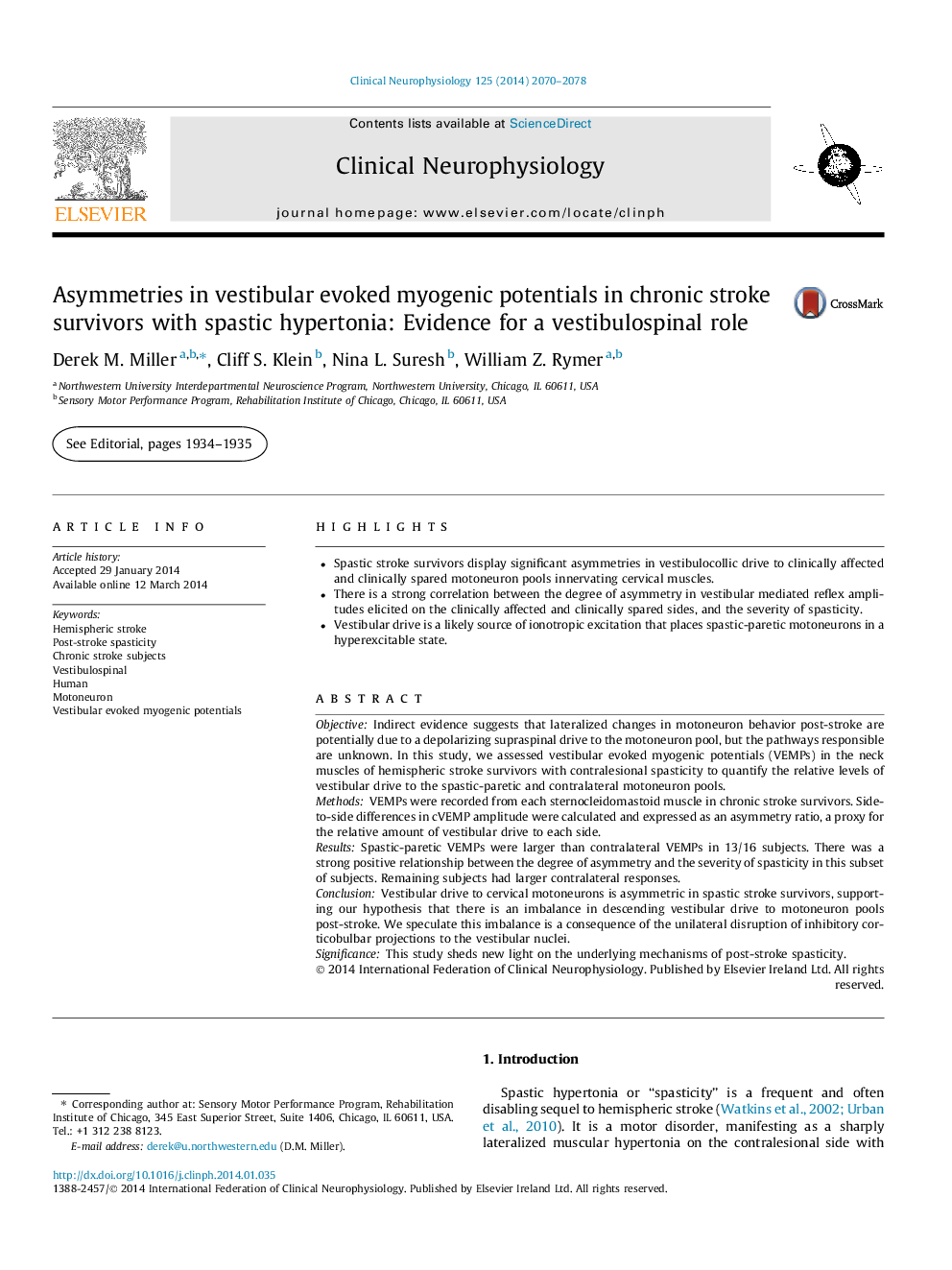| Article ID | Journal | Published Year | Pages | File Type |
|---|---|---|---|---|
| 3042708 | Clinical Neurophysiology | 2014 | 9 Pages |
•Spastic stroke survivors display significant asymmetries in vestibulocollic drive to clinically affected and clinically spared motoneuron pools innervating cervical muscles.•There is a strong correlation between the degree of asymmetry in vestibular mediated reflex amplitudes elicited on the clinically affected and clinically spared sides, and the severity of spasticity.•Vestibular drive is a likely source of ionotropic excitation that places spastic-paretic motoneurons in a hyperexcitable state.
ObjectiveIndirect evidence suggests that lateralized changes in motoneuron behavior post-stroke are potentially due to a depolarizing supraspinal drive to the motoneuron pool, but the pathways responsible are unknown. In this study, we assessed vestibular evoked myogenic potentials (VEMPs) in the neck muscles of hemispheric stroke survivors with contralesional spasticity to quantify the relative levels of vestibular drive to the spastic-paretic and contralateral motoneuron pools.MethodsVEMPs were recorded from each sternocleidomastoid muscle in chronic stroke survivors. Side-to-side differences in cVEMP amplitude were calculated and expressed as an asymmetry ratio, a proxy for the relative amount of vestibular drive to each side.ResultsSpastic-paretic VEMPs were larger than contralateral VEMPs in 13/16 subjects. There was a strong positive relationship between the degree of asymmetry and the severity of spasticity in this subset of subjects. Remaining subjects had larger contralateral responses.ConclusionVestibular drive to cervical motoneurons is asymmetric in spastic stroke survivors, supporting our hypothesis that there is an imbalance in descending vestibular drive to motoneuron pools post-stroke. We speculate this imbalance is a consequence of the unilateral disruption of inhibitory corticobulbar projections to the vestibular nuclei.SignificanceThis study sheds new light on the underlying mechanisms of post-stroke spasticity.
